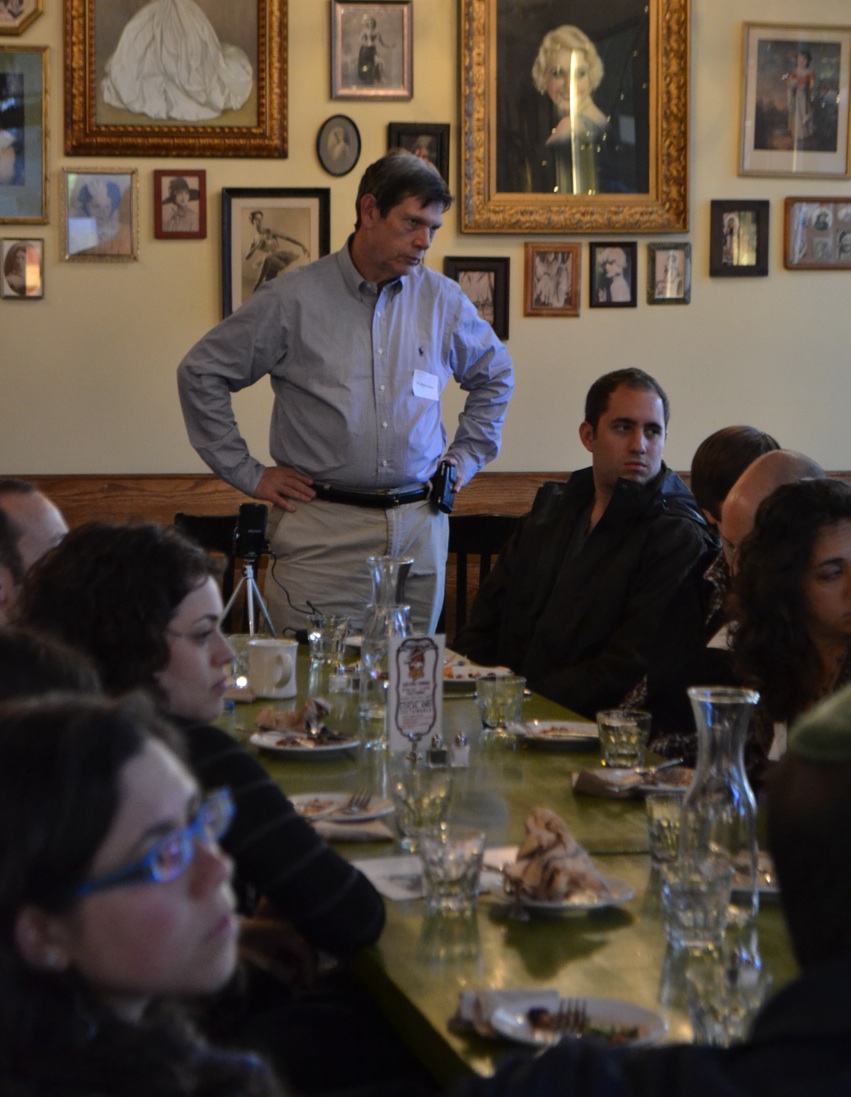By Dikla Tuchman , JTNews Correspondent
There is no doubt about it: The Jewish landscape in American is changing. Whether consciously or not, every generation of Jews faces the issue of how the younger generations of American Jewry are connecting — or not connecting — with Jewish life.
Dr. Steven M. Cohen has written nearly every study about changing trends in American Judaism, and he continually attempts to address this question. As the scholar-in-residence at the annual Stroum Lecture Series at the University of Washington, Cohen visited Seattle last month to discuss this ongoing issue that faces the American Jewish community.
Cohen’s lectures for the Stroum Jewish Studies Program at UW, a small group of young Jewish leaders in an intimate discussion led by Jewish Studies chair Noam Pianko, and with staff and volunteers at the Jewish Federation of Greater Seattle, covered the same basic topic: Engagement in Jewish life is shrinking, intermarriage is increasing — therefore leading to less engagement — and the Jewish community must reinvent itself in ways that address these two issues.
So when Jewish leaders ask the inevitable question, “Why are Jewish young adults less and less engaged?” the first place to look, Cohen says, is at the different environmental changes in the American-Jewish atmosphere.
Cohen divides American Jews into two main groups: Orthodox Jews and everyone else. He then divides the “everyone else” group into two sub-categories: Intermarried Jews — either children of intermarried couples or those who are intermarried themselves — and what he calls inmarried Jews — Jews married to other Jews. According to Cohen’s research, the strongest indicator for involvement in Jewish life is having inmarried parents.
“Intermarried Jews have lower involvement in Jewish life,” argues Cohen.
Looking at Orthodoxy in Jewish American, Cohen points out that the Orthodox movement is moving more to the right and separating itself more from the greater population.
The middle group, which Cohen says makes up about 60 percent of the Jewish population, is neither Orthodox or intermarried. But this group is in demographic decline.
“Orthodoxy is growing and intermarriage is growing,” Cohen says.
Because of this trend, the many Jewish institutions that rely on this population are also struggling and often declining.
“Due to a shrinking demographic base and shifting patterns of affiliation in the U.S.,” Cohen says, “we are seeing less loyalty among these Jewish institutions.”
The issue of loyalty follows a pattern he sees as typical within the younger Jewish generations of Jews under 40 years old.
| They are more autonomous, and no longer subscribe to the notion of automatic affiliation;
| Have a more fluid identity, which changes based on circumstances and is self-defined;
| Feel less of a need to affiliate with institutions.
“Judaism in America relies heavily on affiliation with institutions,” Cohen argues, whether it’s synagogues, Jewish Federations, or any of the other agencies that focuses on a specific niche within the community. That focus on institutions has been, over roughly the last half century, the “supreme act of “˜the good Jew,’” he says.
As the current generation of Jewish young adults move away from the idea of affiliating, the construct of defining the world by Jewish institutions as affiliated and non-affiliated no longer works. Cohen emphasizes that connecting in a more personal way, as these younger Jews are wont to do, is critical now. The best success for the Jewish community in dealing with a much different Jewish landscape is to reevaluate some of its institutions, approach, and the way it connects with a new and very different Jewish population.
Aside from the disconnect that Jews from inmarried Jews are having with American Jewry, Cohen spends a great deal of time and energy talking about intermarried Jews. Statistically, Cohen says, only 15 percent of Jews that are a product of intermarriage or are in intermarried relationships have a likelihood of raising their children as non-Jews.
To put these statistics into context, Stroum Jewish Studies chair Pianko says the importance in the way Cohen engages his audience brings about an understanding of where the institutions serve their communities must adapt to the changing climate.
“He challenges our community to recognize the changes of Jewish life from a scholarly perspective and community leadership perspective,” he says.
But those challenges don’t always reflect the mindsets of the people to whom he applies his statistics.
“For one group he’s shocking and for other groups, he doesn’t seem to understand their identity,” Pianko says.
Many of the young Jewish adults that participated in Cohen’s discussion had a difficult time reconciling his statistics with their own experience of strongly identifying with Jewish life, even if they are products of intermarriage or are in interfaith relationships themselves.
“For some members of the audience it was very challenging,” Pianko says. “For younger adults that came to hear him speak, he wasn’t actually fully capturing the way that some Jews understand themselves.”
In putting a face to the numbers, he added, it “shows in some ways how big the gap is between these two ways of identifying with Judaism.”
